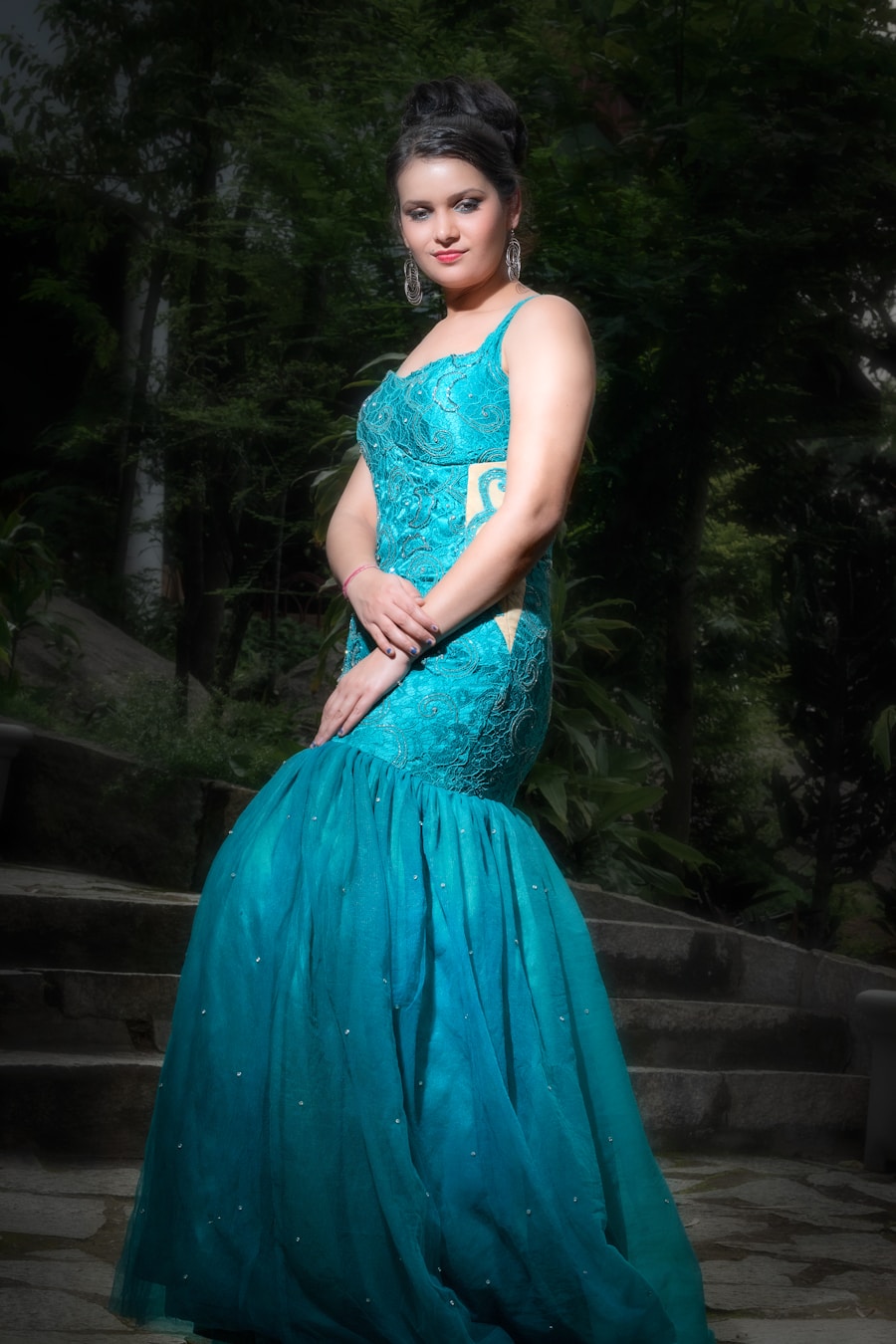Pageant photography holds a unique significance in the world of beauty contests, serving as a visual narrative that captures the essence of the event. As a photographer, you play a crucial role in immortalizing the hard work, dedication, and dreams of contestants. Each click of your camera not only documents the moment but also tells a story that resonates with viewers.
The images you create can inspire future contestants, evoke emotions, and even influence public perception of beauty standards. In this way, your work transcends mere documentation; it becomes a vital part of the pageant’s legacy. Moreover, pageant photography is essential for promoting the event itself.
High-quality images can be used in marketing materials, social media campaigns, and press releases, helping to attract sponsors and audiences alike. When you capture the vibrancy and excitement of a pageant, you contribute to its overall success. Your photographs can highlight the contestants’ personalities, showcase their talents, and reflect the event’s atmosphere.
In essence, your role as a pageant photographer is not just about taking pictures; it’s about creating a visual experience that enhances the entire pageant journey.
Key Takeaways
- Pageant photography is important for capturing the beauty and essence of pageant contestants, and plays a crucial role in showcasing their talent and personality.
- Understanding the pageant industry is essential for a pageant photographer to effectively capture the essence of the event and the contestants.
- Tips for capturing beauty in pageant photography include focusing on the contestant’s unique features, using natural light, and capturing genuine emotions and expressions.
- Choosing the right equipment for pageant photography involves selecting a high-quality camera, lenses, and accessories to ensure professional and stunning results.
- Lighting and composition are key elements in pageant photography, and understanding how to use them effectively can make a significant difference in the quality of the photos.
- Editing and retouching techniques are important for enhancing the final images and ensuring that the contestants look their best while still maintaining a natural and authentic appearance.
- Working with pageant contestants and directors requires strong communication skills, professionalism, and the ability to make the subjects feel comfortable and confident in front of the camera.
- Showcasing your pageant photography work through a professional portfolio, website, or social media can help attract potential clients and opportunities in the pageant industry.
Understanding the Pageant Industry
To excel in pageant photography, it is vital to have a solid understanding of the pageant industry. This world is not just about beauty; it encompasses talent, intelligence, and social awareness. Each contestant brings her unique story and aspirations to the stage, and as a photographer, you need to appreciate these nuances.
Familiarizing yourself with different types of pageants—such as Miss Universe, Miss America, or local competitions—will help you tailor your approach to each event. Understanding the specific criteria and values that each pageant upholds will enable you to capture images that resonate with both contestants and judges. Additionally, recognizing the role of pageant directors and organizers is crucial.
They often have specific visions for how they want the event to be portrayed. By engaging with them and understanding their goals, you can align your photography style with their expectations. This collaboration can lead to more impactful images that reflect the spirit of the competition.
The more you immerse yourself in the culture and dynamics of pageantry, the better equipped you will be to create compelling photographs that tell a story beyond just what is seen on stage.
Tips for Capturing Beauty in Pageant Photography

Capturing beauty in pageant photography requires more than just technical skills; it demands an artistic eye and an understanding of how to highlight each contestant’s unique features. One effective approach is to focus on natural expressions and candid moments. While posed shots are essential, some of the most memorable images come from spontaneous interactions—whether it’s a contestant sharing a laugh with her peers or a moment of reflection before stepping onto the stage.
These genuine moments can convey emotion and authenticity, making your photographs more relatable and impactful. Another tip is to pay attention to details that enhance beauty. This includes everything from makeup and hair to wardrobe choices.
As you photograph contestants, look for ways to emphasize their individuality through these elements. For instance, capturing a close-up of a contestant’s intricate makeup or the flow of her gown can create stunning visuals that highlight her personality. Additionally, consider experimenting with angles and perspectives; sometimes, an unconventional shot can reveal beauty in unexpected ways.
By combining these techniques, you can create a diverse portfolio that showcases the multifaceted nature of beauty in pageantry.
Choosing the Right Equipment for Pageant Photography
| Equipment | Features | Benefits |
|---|---|---|
| DSLR Camera | High resolution, interchangeable lenses | Produces high-quality images, versatile for different shooting conditions |
| Telephoto Lens | Long focal length, image stabilization | Allows for capturing distant subjects, reduces blur in low light |
| External Flash | Adjustable power, bounce capability | Provides additional light control, reduces harsh shadows |
| Tripod | Sturdy build, adjustable height | Stabilizes camera for sharp images, allows for flexible shooting angles |
| Memory Cards | High capacity, fast write speed | Stores large number of images, reduces waiting time between shots |
Selecting the right equipment is fundamental to achieving high-quality results in pageant photography. A professional-grade camera with fast autofocus capabilities is essential for capturing dynamic moments on stage. Look for cameras that perform well in low-light conditions since many pageants take place in dimly lit auditoriums.
Pairing your camera with a versatile lens can also make a significant difference; a fast prime lens is excellent for portraits, while a zoom lens allows you to capture action from various distances without compromising image quality. In addition to your camera and lenses, consider investing in accessories that enhance your shooting experience. A sturdy tripod can provide stability during long shoots, while external flashes or reflectors can help manage lighting challenges.
If you’re shooting video as well as stills, a gimbal stabilizer can ensure smooth footage during dynamic performances. Ultimately, having the right equipment tailored to your specific needs will empower you to focus on creativity rather than technical limitations.
Lighting and Composition in Pageant Photography
Lighting plays a pivotal role in pageant photography, influencing how contestants are perceived in your images. Natural light can create soft, flattering portraits, but indoor events often require artificial lighting solutions to achieve the desired effect. Understanding how to manipulate light—whether through diffusers or reflectors—can help you create stunning visuals that highlight each contestant’s features without harsh shadows or overexposure.
Experimenting with different lighting setups will allow you to find what works best for each venue and situation. Composition is equally important in crafting compelling photographs. The rule of thirds is a classic guideline that can help you create balanced images by placing key elements along imaginary lines that divide your frame into thirds.
However, don’t be afraid to break this rule when it serves your artistic vision. Leading lines, symmetry, and framing techniques can all add depth and interest to your shots. By thoughtfully considering both lighting and composition, you can elevate your pageant photography from simple documentation to artful storytelling.
Editing and Retouching Techniques for Pageant Photography

Post-processing is an integral part of pageant photography that allows you to refine your images and bring out their full potential. Familiarizing yourself with editing software such as Adobe Lightroom or Photoshop will enable you to enhance colors, adjust exposure, and correct any imperfections in your photos. When editing pageant images, aim for a polished yet natural look; over-editing can detract from the authenticity of the moment captured.
Retouching techniques can also play a significant role in enhancing beauty without compromising individuality. Subtle skin smoothing can help create a flawless appearance while maintaining texture; however, it’s essential to strike a balance so that contestants still look like themselves. Additionally, consider using color grading techniques to evoke specific moods or themes that align with the event’s atmosphere.
By mastering these editing skills, you can ensure that your final images reflect both professionalism and artistry.
Working with Pageant Contestants and Directors
Building strong relationships with both contestants and directors is key to successful pageant photography. Establishing rapport with contestants will make them feel more comfortable in front of your camera, resulting in more authentic expressions and poses. Take time to engage with them before the event; understanding their personalities and stories will allow you to capture their essence more effectively during the competition.
Collaboration with directors is equally important as they often have specific visions for how they want their event portrayed through photography. Open communication about expectations and creative ideas can lead to a more cohesive representation of the pageant as a whole. By working closely with both contestants and directors, you create an environment where everyone feels valued and understood—ultimately leading to better photographs that resonate with audiences.
Showcasing Your Pageant Photography Work
Once you’ve honed your skills in pageant photography, showcasing your work becomes essential for attracting new clients and opportunities within the industry. Creating an online portfolio is an effective way to display your best images while providing potential clients with insight into your style and expertise. Consider organizing your portfolio by event type or theme so viewers can easily navigate through your work.
Social media platforms also offer powerful tools for sharing your photography journey with a broader audience. Regularly posting behind-the-scenes content or highlights from recent events can engage followers while demonstrating your passion for pageantry. Additionally, networking within the industry—attending events or collaborating with other professionals—can open doors for new projects and partnerships.
By actively promoting your work and connecting with others in the field, you position yourself as a go-to photographer within the vibrant world of pageantry. In conclusion, mastering pageant photography requires a blend of technical skills, artistic vision, and an understanding of the industry dynamics at play. By focusing on capturing beauty authentically, choosing the right equipment, managing lighting effectively, refining your editing techniques, building relationships with contestants and directors, and showcasing your work strategically, you can carve out a successful niche in this exciting field.
Your photographs have the power to inspire and influence; embrace this responsibility as you embark on your journey as a pageant photographer.
